A vastagság szerepének megértése fa vágódeszkák teljesítményében
A vastagsága határozza meg a fa alapú vágólap fontos szerepet játszik a vágódeszka általános tartósságában, stabilitásában és élettartamában. Egy jól elkészített vágódeszka alapvető eszköz bármely konyhában, és vastagsága közvetlenül befolyásolja, hogy hogyan ellenálló a napi használatnak, hogyan áll ellen a deformálódásnak és hogyan őrzi meg szerkezeti integritását az idő múlásával. Nézzük meg részletesen, miért fa alapú vágólap a vastagság fontos, és hogyan befolyásolja a főzési élményt.

A fa vágódeszkák kialakításának tudománya
Anyagjellemzők és a vastagság összefüggése
A fa vágódeszkák szilárdságát a farostok természetes tulajdonságaiból és méretbeli jellemzőiből szerzik. A fa vágódeszka vastagsága jelentősen befolyásolja, hogy a deszka hogyan reagál a nedvességre, a hőmérsékletváltozásokra és a mechanikai igénybevételre. A vastagabb deszkák általában több farostot és sejtszerkezetet tartalmaznak, így jobb ellenállást biztosítanak a deformálódásnak és repedések kialakulásának. Ezek a deszkák jobban megőrzik alakjukat, mivel a megnövekedett tömeg segít a nedvesség egyenletesebb eloszlásában az anyagban.
Amikor a fa nedvességet szív magába, tágul, és amikor kiszárad, összehúzódik. Egy vastagabb vágódeszkának több anyag áll rendelkezésére, hogy kiegyensúlyozza ezeket a mozgásokat, így jobb stabilitást biztosít. A megnövekedett vastagság emellett több helyet is biztosít a farostok számára, hogy alkalmazkodjanak a környezeti változásokhoz anélkül, hogy a deszka szerkezeti integritása veszélybe kerülne.
Ütésállóság és vágófelület stabilitása
A fa vágódeszka vastagsága közvetlenül összefügg a szeletelő és vágómozgásokból származó ütések elnyelésének képességével. A vastagabb deszkák, általában 1,5 hüvelyk vagy annál nagyobb vastagságúak, jobb ütéselnyelést biztosítanak társaiknál. Ez a fokozott ütéselnyelés nemcsak a deszkát védődik, hanem segíti a kések élének megőrzését is, valamint csökkenti a csuklók terhelését az ételek elkészítése során.
A profi szakácsok gyakran a vastagabb vágódeszkákat részesítik előnyben, mert azok az intenzív szeletelés során stabilabban maradnak. A nagyobb súly segít megakadályozni, hogy a deszka elcsússzon vagy elmozduljon a munkafelületen, így biztonságosabb és hatékonyabb munkakörnyezetet biztosít.
Az optimális vastagság iránymutatásai különböző felhasználásokhoz
Otthoni konyhai alkalmazások
Otthoni használatra a fa vágódeszkák általában 1 és 2 hüvelyk közötti vastagságúak. Egy 1,5 hüvelyk vastag deszka általában a napi konyhai feladatokhoz a megfelelő egyensúlyt kínálja a tartósság és a kezelhetőség között. Ez a vastagság elegendő stabilitást biztosít, miközben elég könnyű ahhoz, hogy könnyen mozgatható és tisztítható legyen. A házi szakácsoknak figyelembe kell venniük saját igényeiket, például a rendelkezésre álló tárolóhelyet és azokat az ételeket, amelyeket rendszeresen készítenek el, amikor a deszka vastagságát választják.
Enyhébb feladatokhoz, például kenyér szeleteléséhez vagy gyümölcsök és zöldségek elkészítéséhez akár 1 hüvelyk vastagságú deszkák is elegendőek. Azonban igényesebb feladatokhoz, például húsvágáshoz vagy erősebb aprításhoz vastagabb deszka választása hosszú távon jobb értéket és teljesítményt nyújt.
Szakmai konyhai követelmények
A szakmai konyhák gyakran vastagabb fából készült vágódeszkákat igényelnek, általában 2 hüvelyk (5 cm) vagy vastagabbakat. Ezek az environmentek olyan deszkákat igényelnek, amelyek ellenállnak az állandó használatnak, gyakori fertőtlenítésnek és a szakácskészek nehéz terhelésének. A növelt vastagságú favágólapok extra tartósságot és stabilitást biztosítanak a kereskedelmi élelmiszer-előkészítéshez.
Az étteremosztályú vágódeszkáknak megfelelő egészségügyi és biztonsági előírásoknak is meg kell felelniük, és a vastagabb deszkák gyakran ellenállóbbak a baktériumfertőzésnek köszönhetően a jobb nedvességkezelési tulajdonságaiknak. Az extra anyag lehetővé teszi a gyakoribb szakmai felújítást is, miközben megőrzi a szerkezeti integritást.
Karbantartási szempontok a deszka vastagsága alapján
Ápolási igények a különböző vastagságokhoz
A fa vágódeszkák karbantartási igénye a vastagságuktól függ. A vékonyabb deszkákat gyakoribb ápolás és körültekintő kezelés érdekében kell kondicionálni a megcsavarodás megelőzéséhez. Ezeket síkban kell tárolni, és gyakoribb olajozásra szorulnak a megfelelő nedvességtartalom fenntartása érdekében a korlátozott faanyag térfogatában. A vastagabb deszkák általában elnézőbbek, de azért továbbra is hasznos a rendszeres karbantartás az optimális teljesítmény biztosításához.
A rendszeres olajozás segít megelőzni a nedvességfelszívódást és meghosszabbítja minden fa vágódeszka élettartamát, függetlenül a vastagságától. Ugyanakkor a vastagabb deszkák több olajat és hosszabb beivódási időt igényelhetnek a nagyobb tömegük miatt. Ezeknek a karbantartási követelményeknek a megértése segít a felhasználóknak a megfelelő gondoskodásban a deszkáikról és élettartamuk maximalizálásában.
Hosszú távú tartóssági tényezők
A fa vágódeszka vastagsága jelentősen befolyásolja a hosszú távú tartósságát. A vastagabb deszkák általában hosszabb ideig tartanak, mert ellenállnak a nagyobb kopásnak és igénybevételnek, beleértve több felújítási folyamatot is élettartamuk során. A plusz anyag pufferként szolgál a kések használata és a tisztítás során keletkező fokozatos kopással szemben, így több felületkezelés után is elkerülhető a cseréje.
A környezeti tényezők, mint a páratartalom változása és hőmérsékletingadozás kevésbé befolyásolják a vastagabb deszkákat, ezáltal hosszabb élettartamot biztosítanak. A vastagabb deszka befektetése gyakran megtérül az évekig tartó megbízható használat és a ritkább csere miatt.
Befektetési szempontok és értékelési elemzés
Költség-haszon elemzés
Míg a vastagabb fa vágódeszkák általában magasabb árakat igényelnek, kiterjedt tartósságuk gyakran jobb hosszú távú értéket eredményez. A minőségi vastag deszka kezdeti költségét gyakran ellensúlyozza hosszabb élettartama és a cserére való ritkább szükség. Emellett a vastagabb deszkák idővel általában jobban megőrzik megjelenésüket, fenntartva esztétikai vonzerejüket, mint a konyha központi elemét.
A költség-haszon arány értékelésekor figyelembe kell venni többek között a használat gyakoriságát, a rendelkezésre álló tárolóteret és a konkrét vágási igényeket. Egy jól kiválasztott vastag deszka akár életre szóló konyhai eszköz is lehet, így értékes befektetés a komoly szakácsok és élelmiszer-szerelmese számára.
Gyakran Ismételt Kérdések
Mi a minimálisan ajánlott vastagság egy fa vágódeszkánál?
Általános otthoni használatra a minimálisan ajánlott fa vágódeszka vastagság 1 hüvelyk. Az optimális tartósság és stabilitás érdekében azonban az 1,5 hüvelykes vastagság tekinthető ideálisnak. A vékonyabb deszkák hajlamosak lehetnek a deformálódásra, és nem biztosítanak elegendő védelmet a munkafelület vagy a kések számára.
Hogyan befolyásolja a vastagság a vágódeszka súlyát és kezelhetőségét?
A vastagabb deszkák természetesen nehezebbek, ezáltal biztosítanak jobb stabilitást használat közben, de mozgatásuk és tisztításuk nehezebb lehet. Az 1,5 hüvelyk vastagságú deszka a stabilitás és kezelhetőség szempontjából kiegyensúlyozott választás a legtöbb felhasználó számára. A 2 hüvelyknél vastagabb, professzionális minőségű deszkák jelentős súlyuk miatt külön tárolóhelyet igényelhetnek.
Előfordulhat, hogy egy vastagabb vágódeszka megakadályozza a deformálódást?
Igen, a vastagabb fából készült vágódeszka lényegesen csökkenti a deformálódás kockázatát. A vastagabb deszkák ellenállóbbak a nedvesség okozta alakváltozásokkal szemben, mivel az állandóan változó páratartalmat egyenletesebben osztják el a tömegükben. Ugyanakkor a megfelelő karbantartási és tárolási gyakorlatok továbbra is elengedhetetlenek a deformálódás megelőzéséhez, függetlenül a vastagságtól.



 Főoldal
Főoldal